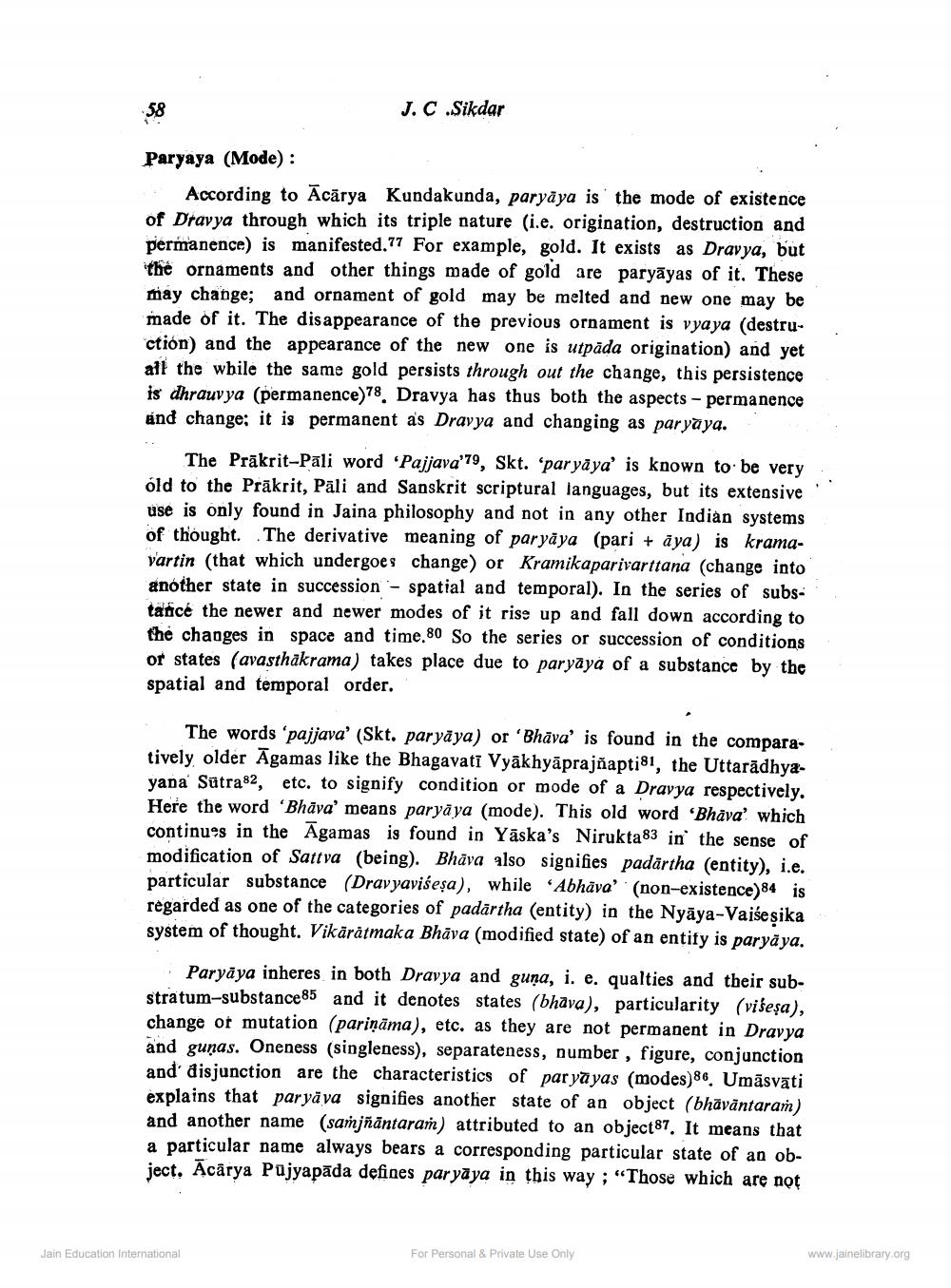________________
J. C.Sikdar
Paryaya (Mode):
According to Ācārya Kundakunda, paryāya is the mode of existence of Dravya through which its triple nature (i.e. origination, destruction and permanence) is manifested. 77 For example, gold. It exists as Dravya, but the ornaments and other things made of gold are paryāyas of it. These may change; and ornament of gold may be melted and new one may be made of it. The disappearance of the previous ornament is vyaya (destruction) and the appearance of the new one is utpada origination) and yet all the while the same gold persists through out the change, this persistence is dhrauvya (permanence) 78. Dravya has thus both the aspects - permanence and change; it is permanent as Dravya and changing as paryaya.
The Prākrit-Pāli word 'Pajjava'79, Skt. 'par yāya' is known to be very old to the Prākrit, Pāli and Sanskrit scriptural languages, but its extensive use is only found in Jaina philosophy and not in any other Indian systems of thought. The derivative meaning of paryaya (pari + āya) is kramavartin (that which undergoes change) or Kramikaparivarttana (change into another state in succession - spatial and temporal). In the series of substance the newer and newer modes of it rise up and fall down according to the changes in space and time.80 So the series or succession of conditions or states (avasthakrama) takes place due to paryāya of a substance by the spatial and temporal order.
The words 'pajjava' (Skt. paryāya) or 'Bhāva' is found in the comparatively, older Āgamas like the Bhagavati Vyākhyāprajñapti81, the Uttarādhyayana Sutra82, etc. to signify condition or mode of a Dravya respectively. Here the word 'Bhāva' means paryāya (mode). This old word 'Bhāvawhich continues in the Agamas is found in Yaska's Nirukta83 in the sense of modification of Sattva (being). Bhāva also signifies padārtha (entity), i.e. particular substance (Dravyaviseșa), while ‘Abhāva' (non-existence)84 is regarded as one of the categories of padārtha (entity) in the Nyāya-Vaišeşika system of thought. Vikārätmaka Bhāva (modified state) of an entify is paryāya.
Paryaya inheres in both Dravya and guna, i. e. qualties and their substratum-substance 85 and it denotes states (bhava), particularity (višeşa), change of mutation (pariņāma), etc. as they are not permanent in Dravya and guņas. Oneness (singleness), separateness, number , figure, conjunction and' disjunction are the characteristics of par yāyas (modes)86. Umāsvati explains that paryäva signifies another state of an object (bhāvāntaram) and another name (samjñāntaram) attributed to an object 87. It means that a particular name always bears a corresponding particular state of an object, Ācārya Pujyapāda defines paryāya in this way ; “Those which are not
For Personal & Private Use Only
Jain Education International
www.jainelibrary.org




